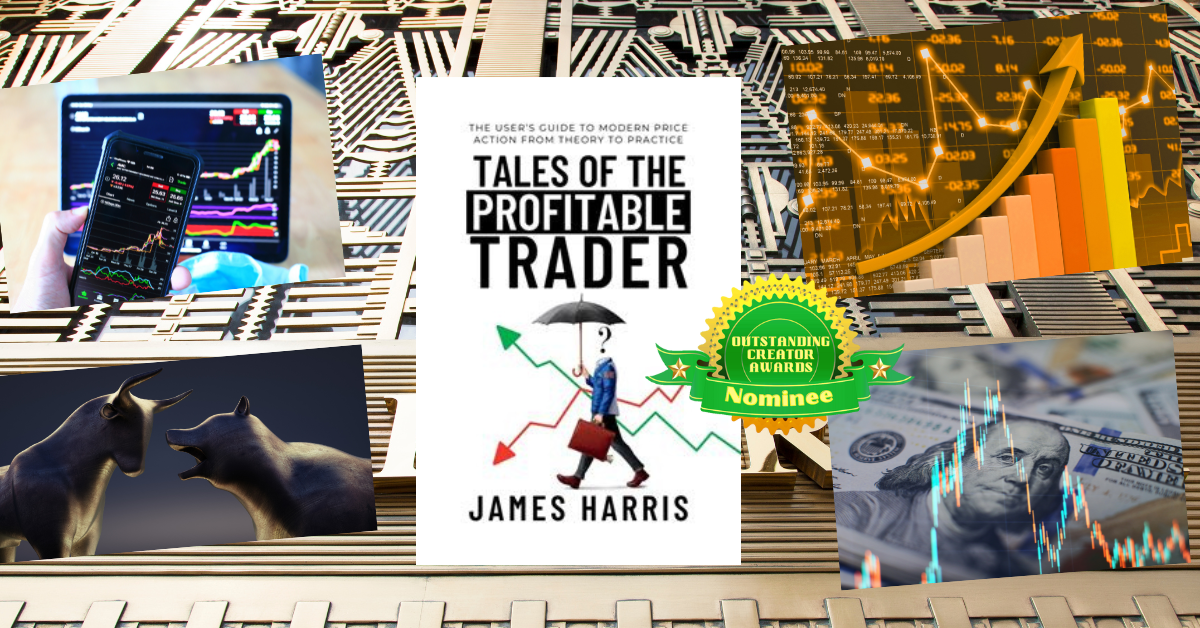|
Score: 95/100 (9.5 out of 10)
Tales of the Profitable Trader by James Harris can easily be called the “Encyclopedia of Modern Trading and Investing!” If you're looking for a truly exhaustive, unabridged book on the topic of trading (in the realm of Economics), then look no further than this. Something very interesting and unique about this book is that Harris draws from various experiences in his life, not just as an experienced stock market investor but also as an engineer and an innovator with several highly-valued products to his name. He even draws from things like chess, physical sports, public transportation, and even card games like Magic the Gathering (believe it or not). Harris has an analogy for just about everything! Like in chess, trading is mostly about making good moves—intelligent choices and decisions. Also like chess, a smart stock market trader should always be accessing the board and managing risk (versus reward). If you play recklessly and put all your pieces in harm's way, you will likely lose. Likewise, if you're overly cautious and never give your pieces a chance to attack when an opportunity presents itself, you'll never win. Harris uses the analogy of a busy city subway system to describe what the stock market can be like. You're never going to know every single little detail about what's going on in the system, nor are you going to be able to control it. However, you can take a moving average (what Harris calls an “eight-period average”) of the status of a particular part of the system. You may not be able to control it, but you can track the “momentum” within the system. Harris also tackles many of the “biases” that can negatively impact your decision making as a trader. He goes through things like “anchoring” in which you're basically basing your present and future choices on things that happened (or you believed to have happened) before. In a fluid situation, you can't always do that. There's also a psychological trap he warns of called the “endowment effect” which occurs when stock prices start dropping and we value something more simply because we own it. Furthermore, there is a flaw in decision making called the “sunk cost fallacy” in which you keep overvaluing and hanging onto something (like a bad stock) just because you've already spent so much money, time, and energy on it. You hold on even though all the signs are there that it's a losing effort that's about to drain your wallet if it hasn't already. Harris also warns of emotional entanglements such as anger and depression. These are things that can also throw off your decision making. The author provides a great example of someone who both thrived from trading while suffering from many of these ailments that brought about his downfall (and death): Jesse Livermore. This is one of the central “tales” of the text as it demonstrates some of the highest highs and lowest lows of trading, serving as a cautionary tale. The last thing we wanted to talk about is Harris's advice to not copy the trading style of someone else just because it seems to work for them. You are your own individual. You need to know what YOUR motivations are, what YOU are willing give up or lose, and what YOU are hoping to truly gain from the experience of trading. It's actually like chess or playing a sport. No two people play chess exactly the same 100% of the time. Some players are more aggressive. Some players are more conservative. Some players are very balanced. Some players specialize in one or two openings. Some players are a jack-of-all-trades. Some play for fun. Some play for fame. Some play for fortune. That's a lot how trading works. Check it out on Amazon!
0 Comments
Leave a Reply. |
Archives
July 2024
Categories |

 RSS Feed
RSS Feed